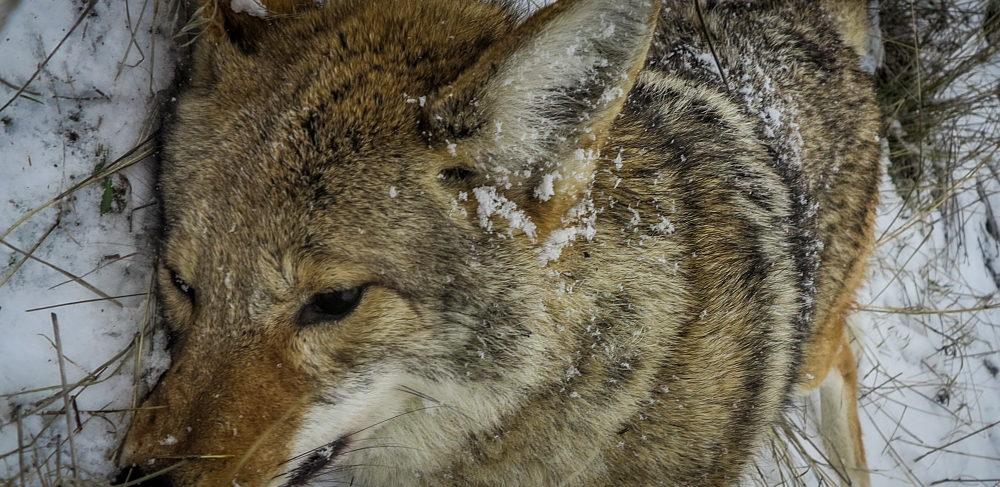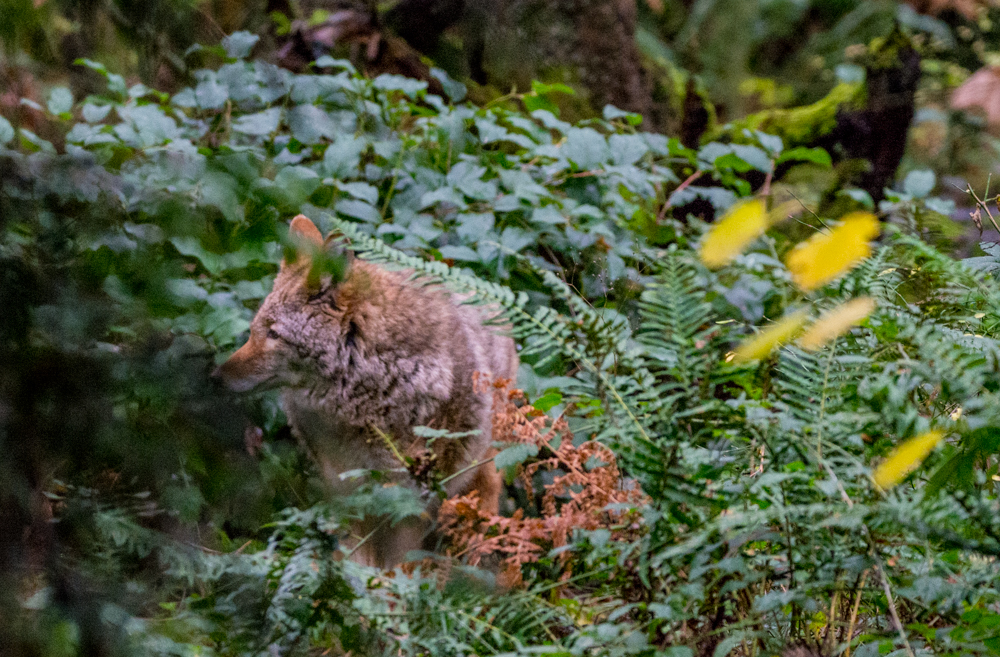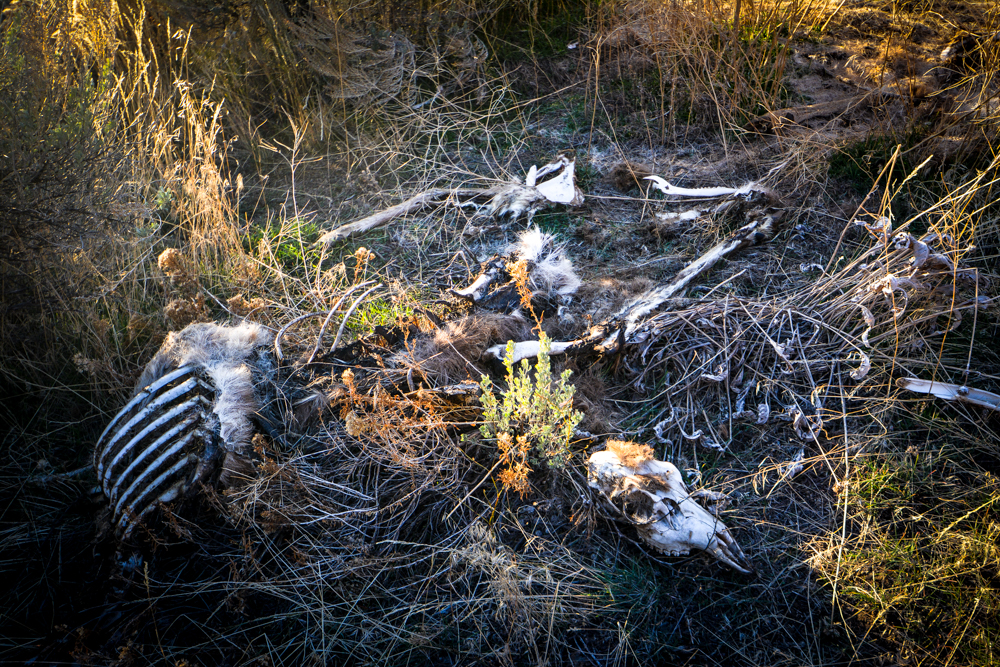4 Tips for Taking More Coyotes Leave a reply
by Jason Brooks
With winter in full swing and our big game season’s over the hunter who doesn’t chase waterfowl might be finding themselves wishing it was still October. But there are a few other things that those who prefer to chase after ungulates instead of fowl can do right now to keep the hunt going and help our quarry through the winter. The most obvious is to go predator hunting, especially for coyotes. Here are a few things to consider when taking afield to hunt the killers of elk calves and deer fawns, the wily coyote.
Know how to set-up to call and your surroundings
A few weeks ago I took my boys and my brother out to call coyotes in Eastern Washington. On our first set of the day we positioned ourselves on a rim above a steep canyon that led down to the Columbia river and an orchard. Using a remote electronic caller, I varied the calls from pup whimpers and birds fighting. Knowing that the coyotes would be coming in from a long distance the call choice was pretty much the highest shrills and screams the electric call had so it would carry a long distance. After twenty minutes we decided to try a new spot and stood up, only to find a coyote running away on the ridge above us. All of us set up thinking any coyotes would be coming in from below and when we saw the dog it was too late, realizing that someone should have set-up to look behind us.
Use cover and camo
Coyotes have very good eyesight and their hearing allows them to pinpoint exact locations. This is why a remote with an electronic call has really helped those who hunt alone. But if you choose to use mouth calls just know that good camo and sitting inside or alongside cover will keep the coyotes from figuring out you’re not a dying jackrabbit. Western Washington has a lot of neighborhood havoc causing coyotes. Hunting small parcels of land near developments isn’t uncommon as long as you have permission from private land owners or the public land is zoned where you can hunt. In these cases, the hunter should wear earth tones, such as brown’s greens, and black so not to draw attention from others.
Be persistent and patient
Depending on where you are and the terrain you are calling will determine how long to call for. A few weeks ago while chasing deer in the late December archery season in Western Washington I cut several coyote and bobcat tracks. Just about every clear-cut landing had some kind of sign of the predators. If I know a bobcat is in the area then I will call for a much longer period of time as they are very patient and so should you be. In a small clear-cut, a hundred acres or less, then twenty minutes is plenty of time for coyotes. The dense forest of Western Washington means the calls won’t carry too far. For the large timber cuts, over a hundred acres, then treat it like you would in Eastern Washington. Give the predators time to cover the distance. I often set a minimum bench mark for 20 minutes and go from there up to an hour.
Use the right gun and ammo
Hunting coyotes and other predators in Eastern Washington means that their pelts are worth money. There are several fur buyers that will buy the coyotes whole or skinned, as long as the fur isn’t damaged. I have three guns that are my “coyote hunting arsenal”. The first is my all-around rifle, a Winchester Model 70 Ranger chambered in .223 Remington. This caliber is light, fast, and perfect for shooting coyotes from 50 yards to 200 yards with little pelt damage and is the rifle I use the most. If I am hunting the wheat fields of the Palouse where shots can be very far then I take my Thompson Center Encore in .243 Winchester. I also take this rifle for hunting Western Washington or any other places where I might run into a Cougar (when the season is open). Lastly, is my 12 gauge. A Mossberg 500 with a modified choke. The shotgun goes with me on all of my hunts and sometimes is the only gun I take for Western Washington hunting and is used for shots from 40 yards and under.
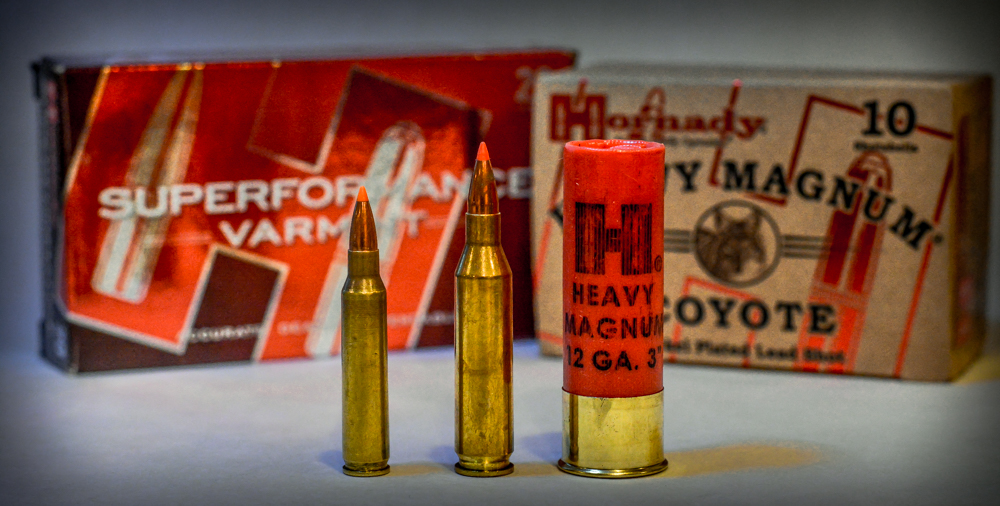
The author’s favorite coyote guns, .223 Remington, .243 Winchester, and the 12 gauge (left to right)-Jason Brooks
The ammunition you choose also makes a big difference. You want a light bullet that enters but then explodes and does not exit. The idea being a small hole going in, and none coming out. Shot placement makes a big difference in this as well but after several years of hunting coyotes I have found the V-Max by Hornady does a great job with little pelt damage. I stopped re-loading my predator rounds awhile back too, since the line of Hornady Superformance Varmint is extremely accurate and can be found with their V-Max bullet. Hornady also makes a Heavy Magnum Coyote shotgun load in 12 and 20 gauge. I prefer the BB size shot in 3-inch magnum 12 gauge. The BB’s are lead and nickel coated, so do not use these for a goose hunt or ducks, even if you jump some while out coyote hunting.
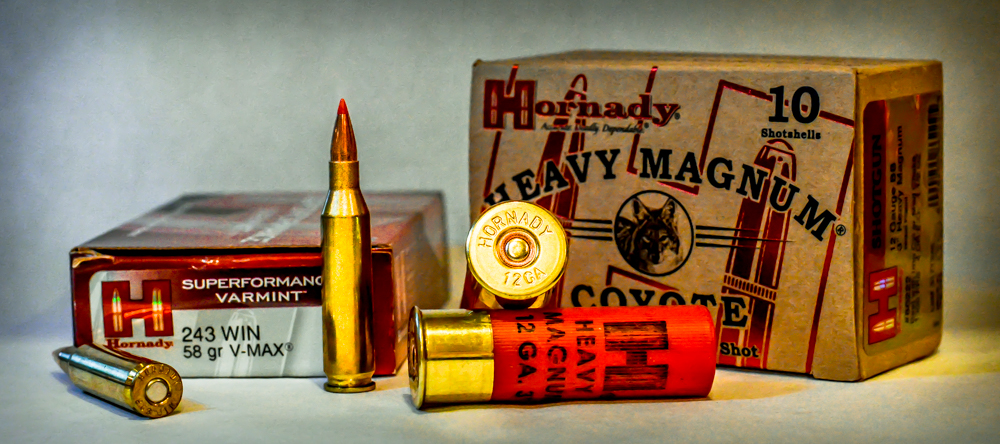
Quality ammo and bullet selection is very important to minimize fur damage or make a lethal kill-Jason Brooks
Why you should hunt coyotes
Some people have a hard time shooting an animal and not using it in some way. The coyotes hunted in Western Washington have no value on the commercial fur market and in a few weeks the dogs in Eastern Washington and Oregon won’t be worth anything either. Once the breeding season starts, usually around the first of February, coyotes start to rub and this ruins the fur. So, why hunt coyotes? Simply put, they are predators and kill a lot of deer fawns and elk calves. As a hunter we owe it to our quarry to conduct sound wildlife management and as we build shopping malls and sub-burbs we shrink the healthy deer and elk habitat but coyotes can thrive in these same locations. If a non-hunter challenges you about hunting coyotes remind them that they also carry a variety of diseases including Parvo and Mange that is easily transferred to our family pets. And speaking of family pets, coyotes love to eat our furry friends and have even tried to grab toddlers and young kids, though very rare. Just because deer and elk season is over doesn’t mean hunting season is over. Head out and hunt coyotes.
Jason Brooks
The Outdoor Line Blogger


